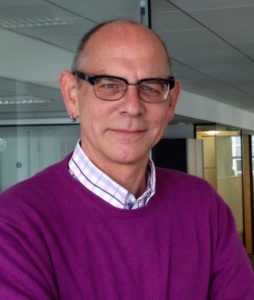 Around the world patient groups in social networks are growing and even becoming of interest to researchers. So, when I got diagnosed with cluster headache (CH) syndrome I gave it a try. CH is not the typical self-help group disorder. It is rare and only occurs in bouts for most patients. When attacked, I don’t want to meet anybody. When the pain goes away, I don’t want to think about it.
Around the world patient groups in social networks are growing and even becoming of interest to researchers. So, when I got diagnosed with cluster headache (CH) syndrome I gave it a try. CH is not the typical self-help group disorder. It is rare and only occurs in bouts for most patients. When attacked, I don’t want to meet anybody. When the pain goes away, I don’t want to think about it.
So, fair enough, I turned to the internet and went searching. For CH an English language Facebook group featured prominently among the online patient resources. Patients and their families manage the site’s traffic and develop rules of engagement for the group.
Chris Hannah, the group’s founder, lives with chronic CH. Before being diagnosed in 2008, he worked in pharma drug management. Two years after being housebound, he founded the Cluster Headache Support Group (CHSG) as a “virtual” organisation in the hope of improving the lives of those with CH. By providing an online support group and advocating for patients, the aim was to improve the quality of patients’ lives (and even save them). CH is also called suicide headache—it is an unusually painful condition. As the authors of a Cochrane review in 2013 said, “cluster headache is an awful thing to have.”
Chris started with an online database explaining the basics of CH in an easily understandable way. He related all this information to scientific evidence (and the CHSG has maintained the service since). Today more than 50 000 patients and supporters have used this source since it was launched. The Facebook group attracts more than 8000 individual members and has input and feedback from a community stretching across the globe.
There are treatment options for CH and there is good evidence to support these treatments. CH attacks can be shortened and a number of medications are prescribed to dampen down cluster activity. Based on his insights, Chris reckons that there is a market of some 4.9 billion US$ per year in the US alone.
Clinical research in CH appears to be small in scale when seen in the context of the estimate that 0.3% of the population experience CH for at least one period of time in their lives. The CHSG therefore aims to better link those with CH with the few opportunities available for clinical research. The CHSG also aims to build confidence among clinicians to recruit effectively, supported by a social media group.
The Facebook group contributes to research by conducting surveys, disseminating research updates, and by the CHSG facilitating patient engagement and conferences. Becoming an incorporated organisation allows the CHSG to take responsibility as a member of the National Organization for Rare Disorders (NORD), and to build stronger links with “real” patient organisations.
The CHSG is now a registered non-profit organisation and has established key partnerships to drive forward new research for both cluster headache and migraine. In fact, through a company called “PatientsLikeMe” it has delivered a patient driven, data capture app that provides valuable tools for patients and their healthcare providers, but which also aggregates the data for valuable research insights. This tracks patient health, treatments, efficacy, side effects, and co-existing conditions.
Compared with “traditional” patient organisations, the scope of people that can be reached and “united” online (different professions, ages, nationalities) is very rewarding. For me the existence of this group and the information it has provided have enabled a very rapid learning curve. It is a great resource to enliven the dry words of scientific publications. In helping me to manage the side effects of treatment and choose my own path, the e-patient community has proven its value.
So, if these groups are so valuable, how can patients’ use of them be improved? Can the content discussed in them be refiltered or evaluated to improve physician-patient relationships? How much of the e-patient knowledge is “spilling” over into medical education through e-patients participating as teachers in medical training? How much should a medical specialist invest in participating in these forums? How can physicians and other medical staff contribute meaningfully without “over-medicalising” the communication? Do we have enough capacity to effectively intervene and control for dangerous and unsafe content?
I’m not sure that I have the answers to these questions, but as the growth of online patient groups shows no sign of stopping, they will need to be addressed.
Matthias Wienold belongs to the board of directors of the CHSG. He represents the European AIDS Treatment Group (EATG) at the International Alliance of Patients’ Organizations (IAPO). He is an elected governing board member of IAPO.
Competing interests: I have read and understood BMJ policy on declaration of interests and declare the following interests: I am a member of the not-for-profit CHSG Inc. (US) and belong to the board of directors.